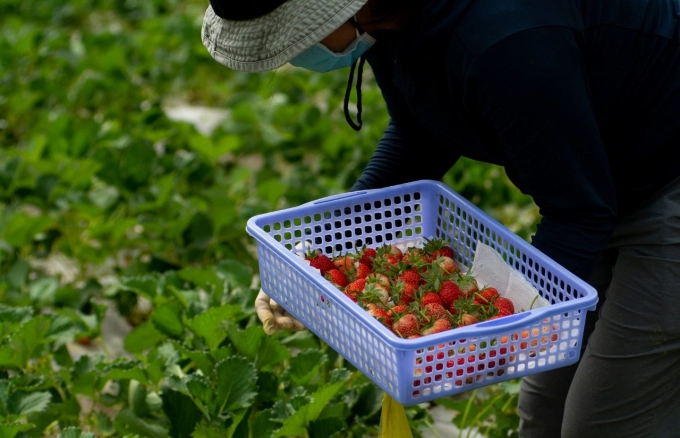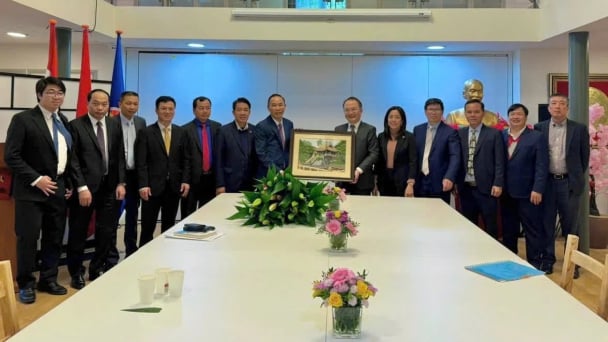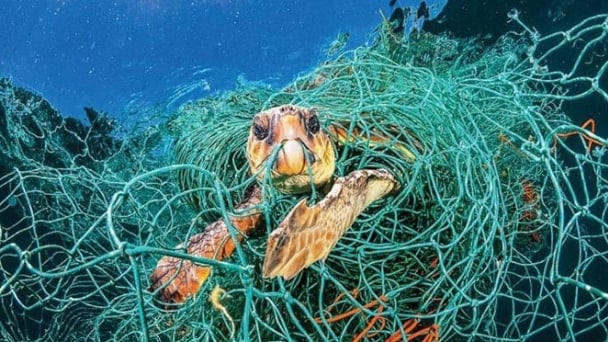June 16, 2025 | 06:23 GMT +7
June 16, 2025 | 06:23 GMT +7
Hotline: 0913.378.918
June 16, 2025 | 06:23 GMT +7
Hotline: 0913.378.918
First, from the viewpoint of flexible main force products, we mobilize the resources to strengthen each ecosystem. Especially in the Mekong Delta, instead of focusing on rice plant development like previously, seafood has been encouraged as a high-value, stable, and sustainable export product.
Consequently, it is more evident to consider the growth model at the national and local levels to produce products with export potential, thereby generating momentum and expanding the market. Vietnam's agricultural exports have steadily expanded and created a surplus of value, which is the best demonstration.
Second, home agricultural production models have facilitated the introduction of cutting-edge technology that lower investment risks. Despite the obstacles posed by epidemics and the "price storm," concentrated livestock and poultry farms have been secured.

Agricultural expert Hoang Trong Thuy.
Thirdly, agricultural and animal wastes have been recycled for use in agriculture. We have laid the foundation for a sustainable circular economy. Farmers are conscious of the need to reduce input costs to increase profits.
The practice of circular agriculture has expanded to a variety of locations, including cattle production regions, pineapple production areas in the vicinity of seafood processing factories, and coconut growing locations in Ben Tre. These are the models toward which the future of agriculture is oriented.
Fourth, the tendency of land acquisition and concentration is on the rise. The principal form of accumulation is not the transfer of land use rights, but rather the leasing of land from farmers for production expansion. Even in the most challenging locales with limited agricultural land, such as the province of Thai Binh, there have been several examples of relatively considerable land accumulation.
Regarding rural regions, the multi-subjective link proposed to establish sustainable product value chains is obvious. Households and cooperative organizations engaged in agriculture are no longer "isolated" in their own "oasis." They collaborate in production to build satellite units for cooperatives and "core" firms with economic potential, administrative capability, and product demand. Farmers now have access to smart equipment such as mobile phones and computers for connecting sales, attracting investment, and gaining production and business knowledge.

Harvest Hana strawberries at Max Organic. Photo: Organica.
Agriculture is seen as a living organism. Thus, the change in agriculture has resulted in population and residential movements toward production cooperatives. The status and significance of agriculture and rural development have been elevated in the thoughts of commune and district officials. They recognize that it is the basis, the pivot, for ensuring sustainable growth, and that the outcomes of the new rural building are based on the physical and mental capabilities of farmers.
Ecological agriculture, which produces clean, safe, and organic products, is also seen as an inevitable consumption trend. Therefore, contaminated food has no longer made headlines in recent years. This is a progressive strategy.
In the long run, agriculture is regarded as the most successful sector, with an average annual growth rate of 2.74 percent, and an average annual export turnover growth rate of 8.79 percent, which is with the lowest levels of investment and trade protection...
Due to the aforementioned examples, we can see the strength of agriculture. Based on the greate achievements made over the years, we can affirm that agriculture is the country's development strength, especially until the most recent Central Conference.
Translated by Linh Linh

(VAN) The working delegation from the Ministry of Agriculture and Environment conducted an important trip to the Netherlands to strengthen strategic partnerships and sustainable development in the agricultural sector.

(VAN) The letter ‘A Plea from the Ocean’ not only evokes emotion but also awakens the human conscience to the responsibility of protecting life on Earth.

(VAN) The Department of Agriculture in South Africa has announced the country’s first mass vaccination of poultry to prevent local birds from contracting avian influenza.

(VAN) Establishment of the Mekong Delta Regional Agricultural Linkage Center, aiming for a closed value chain, deep processing, trading platforms, and international market connectivity.

(VAN) Gia Lai province has recently recorded 460 rare species of animals and plants, contributing to forest conservation and biodiversity planning in the region.

(VAN) Ms. Caroline Beresford, New Zealand Ambassador to Vietnam, expressed confidence that agricultural cooperation between Vietnam and New Zealand will develop sustainably, be climate-resilient, and promote gender equality.

(VAN) Vietnam reaffirms its commitment to international cooperation in fostering sustainable and responsible fisheries while ensuring resilient livelihoods for small-scale fishing communities.